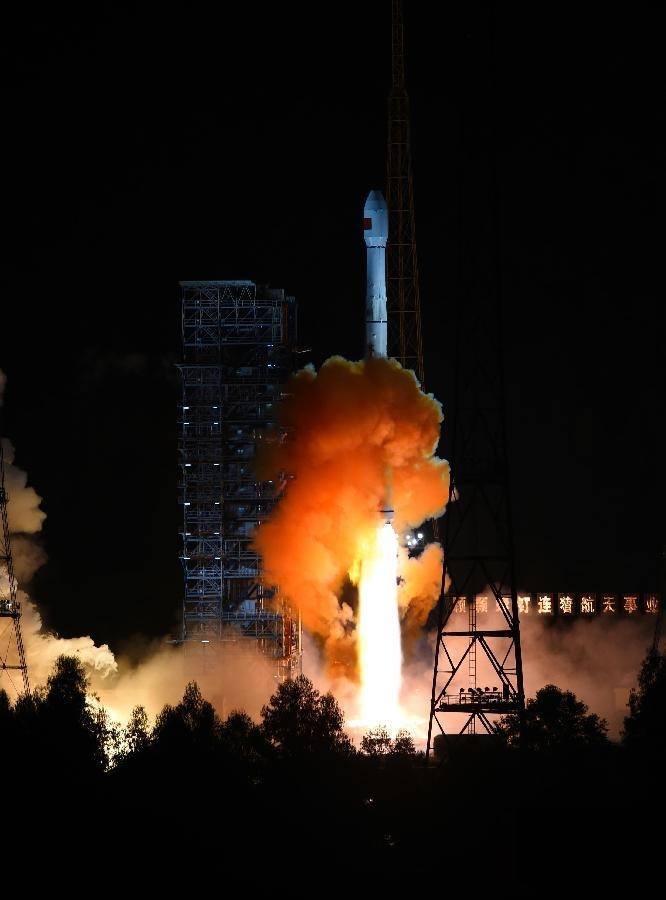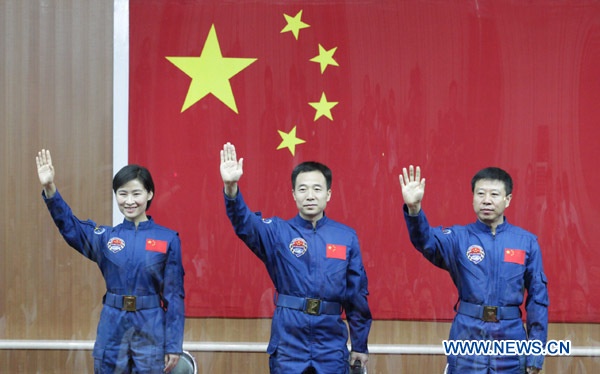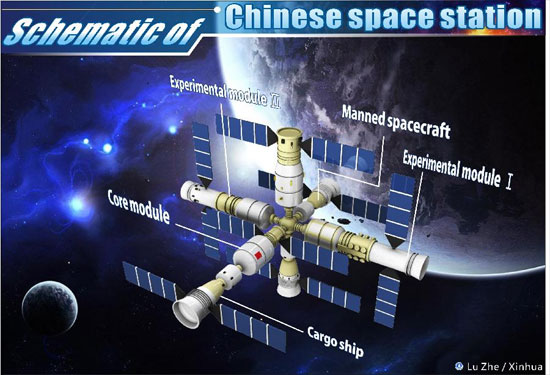
China's Space Prowess Could Challenge Decades of US Dominance: Report

The U.S.-China Economic and Security Review Commission (USCC) recently released its 2015 annual report to Congress, and it includes an intriguing look at the China's space and counterspace programs.
The 2015 report, released in November and provided to Inside Outer Space by the USCC, provides information on and analysis of developments in the U.S.-China security dynamic, U.S.-China bilateral trade and economic relations, and China's evolving bilateral relationships with other nations.

In an introduction to Section 2, which includes the analysis on China's space program, the report notes that China "has become one of the top space powers in the world" after decades of high prioritization and steady investment. [China's Space Station Plans in Pictures]
"China's aspirations are driven by its assessment that space power enables the country's military modernization and would allow it to challenge U.S. information superiority during a conflict," the report states.
Among other purposes, the report contends, China's space and counterspace programs are designed to support its conduct as part of its antiaccess/area denial strategy to prevent or impede U.S. intervention in a potential conflict.
The U.S. Department of Defense defines "antiaccess" actions as those that are intended to slow deployment of an adversary's forces into a theater or cause them to operate at distances farther from the conflict than they would prefer.
"Area denial" actions affect maneuvers within a theater, and are intended to impede an adversary's operations within areas where friendly forces cannot or will not prevent access.
Get the Space.com Newsletter
Breaking space news, the latest updates on rocket launches, skywatching events and more!
Antisatellite systems

The report is rich in factoids and citations about China's aspirations in space – both for civil and military purposes, including that country's expanding deep-space exploration agenda.
As listed in the report's section focused on space, some of the conclusions are:

- Although China's space capabilities still generally lag behind those of the United States and Russia, its space program is expanding and accelerating rapidly as many other nations' programs proceed with dwindling resources and limited goals.
- China's aspirations in space are driven by its judgment that space power enables the country's military modernization, drives its economic and technological advancements, allows it to challenge U.S. information superiority during a conflict, and provides the Chinese Communist Party with significant domestic legitimacy and international prestige.
- China likely has capitalized on international cooperation to acquire the bulk of the technology and expertise needed for most of its space programs. China probably will continue to pursue close cooperation with international partners to overcome specific technical challenges and to meet its research and development objectives and launch timelines.
- As China's developmental counterspace capabilities become operational, China will be able to hold at risk U.S. national security satellites in every orbital regime.
- China is testing increasingly complex co-orbital proximity capabilities. Although it may not develop or operationally deploy all of these coorbital technologies for counterspace missions, China is setting a strong foundation for future co-orbital antisatellite systems that could include jammers, robotic arms, kinetic kill vehicles, and lasers.
- Civilian projects, such as China's human spaceflight missions, directly support the development of People's Liberation Army (PLA) space, counterspace, and conventional capabilities. Moreover, Chinese civilian and commercial satellites likely contribute to the PLA's command, control, communications, computers, intelligence, surveillance, and reconnaissance (C4ISR) efforts whenever it is technically and logistically feasible for them to be so utilized, and they would probably be directly subordinate to the PLA during a crisis or conflict. Given the PLA's central role in all of China's space activities, U.S. cooperation with China on space issues could mean supporting the PLA's space and counterspace capabilities.
- China's rise as a major space power challenges decades of U.S. dominance in space—an arena in which the United States has substantial military, civilian, and commercial interests.
Note: The full report is available at:
http://origin.www.uscc.gov/sites/default/files/annual_reports/2015 Annual Report to Congress.PDF
Leonard David has been reporting on the space industry for more than five decades. He is former director of research for the National Commission on Space and is co-author of Buzz Aldrin's 2013 book "Mission to Mars – My Vision for Space Exploration" published by National Geographic with a new updated paperback version released in May 2015. Follow us @Spacedotcom, Facebook or Google+. Originally published on Space.com.
Join our Space Forums to keep talking space on the latest missions, night sky and more! And if you have a news tip, correction or comment, let us know at: community@space.com.

Leonard David is an award-winning space journalist who has been reporting on space activities for more than 50 years. Currently writing as Space.com's Space Insider Columnist among his other projects, Leonard has authored numerous books on space exploration, Mars missions and more, with his latest being "Moon Rush: The New Space Race" published in 2019 by National Geographic. He also wrote "Mars: Our Future on the Red Planet" released in 2016 by National Geographic. Leonard has served as a correspondent for SpaceNews, Scientific American and Aerospace America for the AIAA. He has received many awards, including the first Ordway Award for Sustained Excellence in Spaceflight History in 2015 at the AAS Wernher von Braun Memorial Symposium. You can find out Leonard's latest project at his website and on Twitter.









